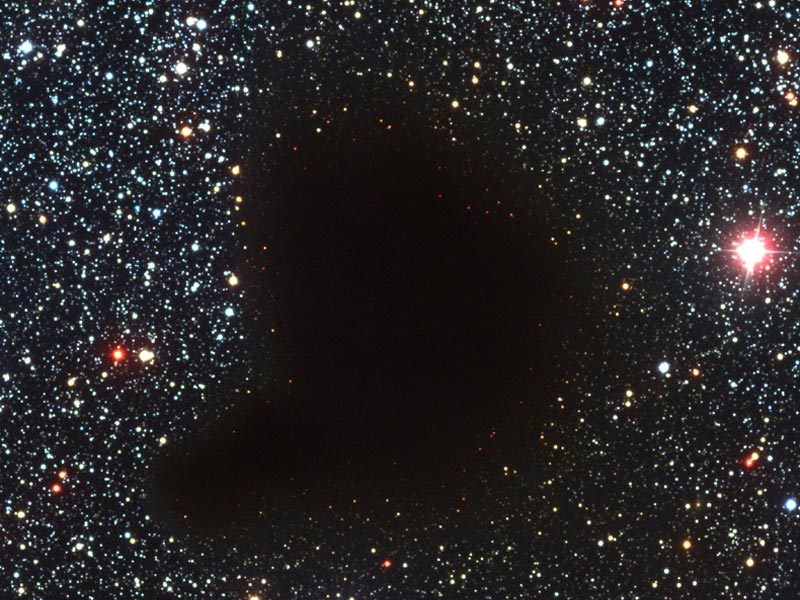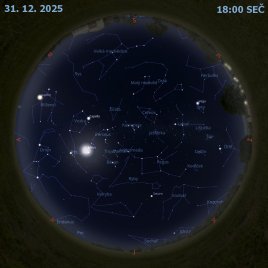Molekulární mračno Barnard 68

Uznání: FORS Team, 8.2-meter VLT Antu, ESO
Kam zmizely všechny hvězdy? To, co se považovalo za díru v obloze astronomové nyní znají jako tmavý molekulární mrak. Vysoká koncentrace prachu a molekulárního plynu zde absorbuje prakticky všechno viditelné světlo vyzařované hvězdami pozadí. Záhadné tmavé okolí napomáhá vnitřku molekulárních mračen stát se nejchladnějšími a nejizolovanějšími místy ve vesmíru. Jedním z nejpozoruhodnějších těchto tmavých absorpčních mlhovin je mračno v souhvězdí Hadonoše (Ophiuchus) známé jako Barnard 68, které je na snímku nahoře. To, že ve středu nejsou viditelné žádné hvězdy ukazuje, že Barnard 68 je poměrně blízko, asi 500 světelných let daleko a napříč měří asi polovinu světelného roku. Není přesně známo, jak molekulární mračna jako je Barnard 68 vznikají, ale je známo, že mračna samotná jsou pravděpodobně místy vzniku nových hvězd. Přes mračno je možné prohlédnout v infračerveném světle.
NASA Official: Phillip Newman Specific rights apply. NASA Web Privacy Policy and Important Notices
A service of: ASD at NASA / GSFC & Michigan Tech. U.
Odkaz na originální APOD


